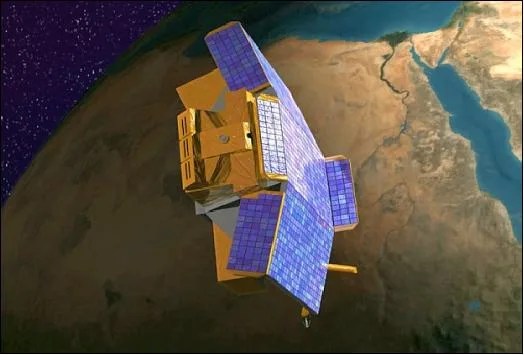CHIPS
Cosmic Hot Interstellar Plasma Spectrometer
Type
Launch
Target
Objective
The Cosmic Hot Interstellar Plasma Spectrometer (CHIPS) was a University-Class Explorer (UNEX) mission. The CHIPS program demonstrated that a small (65 kg), three-axis stabilized spacecraft and science instrument could be built and operated for a fraction of the cost of traditional missions. CHIPS launched on January 12, 2003 as a secondary payload aboard the ICESAT Delta-II launch vehicle. Although CHIPS had a design life of only 18 months, it operated successfully for over five years.
Science Highlights
CHIPS carried out an all-sky survey of the diffuse background at wavelengths from 90 to 260 Å at a spectral resolution between about λ / 150 and λ / 40, and a spatial resolution of 5 to 15 degrees. CHIPS detected diffuse emission near 170 Å, but this turned out to be associated with the earth’s thin outer atmosphere or its interaction with the solar wind. CHIPS set tight limits on but did not detect emission expected from the local interstellar medium. Scientists had believed that much of the space between nearby stars was filled with hot plasma at a temperature near one million degrees Kelvin. Either the interstellar medium is not at the temperature expected, or is significantly depleted in iron, or is located behind too much absorbing (neutral) gas. CHIPS observations of the full moon, and of diffuse emission from the earth’s outer atmosphere, confirm that the instrument operated properly on orbit.
Through a serendipitous feature of the instrument, CHIPS was able to capture extreme ultraviolet spectra of the full solar disk over a period of years. CHIPS monitored hot solar plasma at temperatures between one and two million degrees Kelvin as active solar regions rotated across the sun’s surface. The CHIPS spectra clearly show that the standard plasma model used to synthesize the solar spectrum does not match features in the actual spectrum. In particular, the standard plasma model over-predicts emission from plasma at temperatures below one million degrees and above two million degrees Kelvin. This disagreement is important in cross-calibrating and interpreting the results from TIMED, SORCE, SOHO/EIT, CDS/GIS, and the Solar Dynamics Observatory, as well as modeling the photochemistry induced by solar radiation in earth’s and planetary atmospheres.
Last Updated Date: May 28, 2015





























